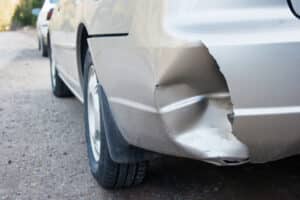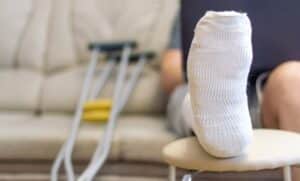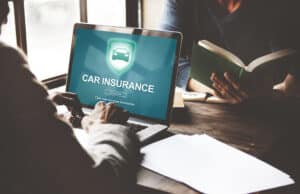Following a car crash that a negligent driver caused, you need to place your insurance company on notice of the collision. If the at-fault driver is uninsured or underinsured, you may need to file a first-party claim with your insurer for compensation.
Insurance companies and their adjusters are never on your side, and they will look for any excuse to deny fault for your accident or undervalue your claim. This is even true when dealing with your insurance company and its representatives.
You should consult a skilled Phoenix car accident lawyer immediately after a crash. Your lawyer can effectively communicate with insurance company representatives on your behalf and take the legal steps necessary to recover the financial compensation you need.
Types of Car Accidents and Injuries that Negligent Drivers May Cause
Negligent drivers can cause various car accidents, each presenting unique risks and potential injuries. Rear-end collisions, a common type of accident, occur when a driver fails to maintain a safe following distance, resulting in one vehicle hitting the back of another. These accidents often lead to whiplash injuries, where the sudden impact causes the accident victim's head and neck to jerk forward and backward abruptly, straining the soft tissues.

Side-impact collisions, also known as T-bone accidents, happen when one vehicle collides with the side of another. These accidents often result in serious injuries due to the limited protection offered by the sides of vehicles. Victims may suffer fractures, internal organ damage, or head injuries depending on the force of impact.
Head-on collisions are particularly severe and occur when two vehicles collide frontally. The high impact can lead to catastrophic injuries, including traumatic brain injuries, spinal cord injuries, and severe fractures. Such accidents often result in substantial medical treatment and long-term consequences for the victims.
Rollover accidents involve a vehicle overturning onto its side or roof. These accidents can cause a range of injuries, including head injuries, fractures, and lacerations. Passengers may be at a heightened risk of being ejected from the vehicle during a rollover, leading to more severe injuries for them.
Single-vehicle accidents, where only one vehicle is involved, can also result from negligent driving. Drivers may lose control due to distractions, impairment, or excessive speed, resulting in collisions with fixed objects such as trees or utility poles. Passenger injuries in such accidents can vary widely but may include head injuries, fractures, or internal injuries.
Accidents involving pedestrians occur when negligent drivers fail to yield the right-of-way or disobey traffic signals. Pedestrians are particularly vulnerable, and injuries may include broken bones, head injuries, or internal injuries.
Motorcycle accidents frequently happen when other drivers fail to notice motorcycles on the road. The lack of protection for motorcyclists makes them especially susceptible to severe injuries, including road rash, fractures, and head injuries.
If you suffered injuries in an accident that a negligent driver caused, a car accident lawyer in your area can handle the legal steps. At the same time, you focus on making a full medical recovery.
Things Not to Tell Your Motor Vehicle Insurer after an Accident
When dealing with a car accident insurance company after a collision, you must be mindful of the information you provide. You should always avoid making statements that can potentially harm your claim or affect the outcome of the car accident investigation.
- One key consideration is refraining from admitting fault for the accident. Regardless of the circumstances, admitting fault may be used against you in determining liability. Stick to providing factual details about the incident without explicitly assigning blame.
- Be cautious about speculatively discussing your injuries. If you're uncertain about the extent of your injuries, refrain from making definitive statements. Instead, inform the insurance company that you are seeking medical attention, and they will provide a detailed account once you have received a comprehensive assessment from treating healthcare providers.
- Avoid downplaying the severity of the accident or your injuries. While providing accurate information is essential, minimizing the collision can lead to challenges in obtaining fair compensation. Communicate the facts without diminishing the incident's significance or your resulting injuries.
- Furthermore, refrain from providing unnecessary details or speculative information about your actions leading to the accident. Stick to the facts you are certain about, and avoid adding unnecessary elements that may complicate the claims process.
- Exercise caution when discussing any potential pre-existing injuries or medical conditions. While honesty is essential, be mindful of how you frame the information. Communicate any relevant pre-existing conditions, but avoid volunteering information that the insurance company might misconstrue.
- It's advisable not to accept quick settlement offers without thoroughly evaluating the extent of your injuries and damages – or speaking with an experienced car accident attorney. Rushed decisions may lead to inadequate compensation, especially if the full extent of your medical treatment and long-term consequences are unclear.
Overall, when communicating with a car accident insurance company, be cautious about admitting fault, speculating on injuries, downplaying the severity of the incident, providing unnecessary details, discussing pre-existing conditions carefully, and avoiding hasty settlements. Clear, factual communication is essential to ensure that your rights remain protected and that you can obtain fair compensation for the damages you incurred in the collision.
When to File an Uninsured or Underinsured Motorist Claim after a Car Accident
Filing an uninsured or underinsured motorist claim with your own insurance company may become necessary when you experience a car accident and the at-fault driver either lacks insurance coverage or is insufficient to fully compensate you for your damages.

If the other driver involved in the accident is uninsured – meaning they have no auto insurance coverage – you may need to turn to your uninsured motorist policy. This coverage protects you when the responsible party doesn't have insurance. It can help cover your medical expenses, property damage, and other losses from the accident.
Similarly, underinsured motorist coverage comes into play when the at-fault driver has insurance, but their coverage limits are inadequate to cover your damages fully. In such cases, your underinsured motorist coverage can supplement the at-fault driver's policy, helping to bridge the gap and ensuring you receive the compensation needed to address your medical bills, lost earnings, vehicle repair costs, and other accident-related losses.
Filing an uninsured or underinsured motorist claim may also be necessary when the at-fault driver flees the accident scene, and their identity remains unknown. In hit-and-run situations where the responsible party cannot be identified or located, your uninsured motorist coverage can provide the financial protection you need.
Knowing the specific terms and conditions outlined in your insurance policy regarding uninsured or underinsured motorist coverage is crucial. Understanding the limitations, coverage limits, and any requirements for filing such claims ensures you can navigate the claims-filing process effectively.
When considering filing an uninsured or underinsured motorist claim, documenting the details of the accident, obtaining a police report, and seeking medical attention promptly are essential steps. Providing clear and comprehensive information to your insurance company will help facilitate the claims process and ensure you receive the compensation you deserve.
An experienced car accident lawyer can determine your eligibility for filing an uninsured or underinsured motorist claim and gather the documents necessary for your case. They can also handle all communications with insurance company representatives on your behalf.
How to Legally Prove a Car Accident Claim
Proving the legal elements of a third-party or first-party car accident claim arising from someone else's negligence involves strategically presenting evidence to establish key factors. One important element is demonstrating the duty of care owed by the at-fault party. This often involves introducing evidence such as traffic laws, regulations, and established standards of conduct for drivers.
To establish a breach of duty, your attorney may introduce various types of evidence, such as witness testimonies, accident reconstruction reports, and professional opinions. Eyewitness accounts can provide valuable perspectives on the events leading to the accident. In contrast, accident reconstruction reports utilize scientific analysis to recreate the sequence of events, helping establish how the breach of duty occurred.
Causation, another essential element, requires a clear link between the at-fault party's breach of duty and the accident victim's injuries. Medical records, professional medical opinions, and accident reports are pivotal evidence in establishing this connection. They can demonstrate that the injuries directly resulted from the at-fault party's negligent actions – rather than pre-existing conditions or unrelated factors.
Evidence demonstrating the extent of damages is also crucial to support compensation claims. Medical records detailing the injuries, treatment plans, and related expenses establish the economic damages incurred. Testimony from medical professionals, such as treating doctors and specialists, can further reinforce the severity of the victim's injuries and their need for specific treatments.
Non-economic damages, such as pain and suffering, often require a different approach. Personal testimonies from the victim and possibly friends or family members can provide insight into the emotional and psychological consequences of the victim's injuries. Photographs or videos depicting the accident scene, vehicle damage, and injuries can also contribute to illustrating the overall effect on the victim's life.
Eyewitness accounts and professional opinions may also play a role in establishing the credibility of the victim's account of the accident. These sources can attest to the victim's character, behavior, and the accident's immediate aftermath.
Additionally, maintaining thorough documentation of the accident, such as photographs, videos, and police reports, can be invaluable in reinforcing the incident narrative. Timely and accurate documentation serves as a factual and visual record of the accident scene, the conditions at the time, and any contributing factors.
In general, proving the legal elements of a car accident claim stemming from someone else's negligence involves introducing a wide range of evidence. Traffic laws, witness testimonies, accident reconstruction reports, medical records, professional opinions, photographs, videos, and personal accounts collectively form a compelling case that establishes the duty of care, breach of duty, causation, and extent of damages incurred. A skilled car accident lawyer can submit all of this evidence to the insurance company adjuster handling your claim in pursuit of a favorable settlement offer.
Damages in Car Accident Claims
Following a car accident, victims may be entitled to various recoverable damages to compensate for their losses. Non-economic damages, such as pain and suffering, recognize the intangible toll on the victim's well-being. These damages encompass the physical and emotional distress that the victim experienced due to the accident, including pain, anxiety, and diminished quality of life.

Lost earnings also constitute a significant component of recoverable damages. When injuries result in the inability to work, victims may seek compensation for lost income during recovery. Additionally, loss of earning capacity accounts for the long-term effect on the victim's ability to earn income – especially in cases where injuries permanently reduce earning potential.
Property damage reimbursement covers repairing or replacing damaged vehicles and other property. This includes repair bills, replacement vehicle costs, and any personal belongings damaged in the accident.
Medical expenses represent a crucial aspect of recoverable damages, encompassing the costs of necessary medical treatment, rehabilitation, and ongoing care. Victims are entitled to receive compensation for hospital bills, surgeries, medications, and therapeutic interventions required for their recovery.
Punitive damages may also be available in certain cases, punishing the at-fault party's egregious negligence or intentional misconduct. These damages aim to deter similar behavior in the future and hold the responsible party accountable for their negligent actions.
Recoverable damages following a car accident cover a wide range of losses. Non-economic damages acknowledge the intangible suffering, while compensation for lost earnings and loss of earning capacity addresses the financial effects of the car accident. Property damage reimbursement covers vehicle and personal property losses, while medical expenses encompass necessary treatment costs. In certain cases, punitive damages may be available to hold the at-fault party accountable.
An experienced car accident lawyer can aggressively negotiate with the insurance company adjuster handling your case and work to maximize the compensation you receive.
Speak with an Experienced Car Accident Lawyer Today

Following a car accident resulting from another driver's negligence, you should be cautious about what you tell insurance company representatives – even those from your insurance company. A knowledgeable car accident attorney in your jurisdiction can handle all oral and written communications with insurance company adjusters, file a timely claim or lawsuit, and pursue the damages you deserve for your losses.